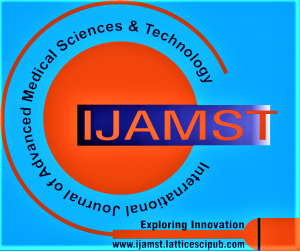![]()
Secondary Treatment of Facial Asymmetry in Hemifacial Microsomia
Jan Rustemeyer1, Susanne Sehhati Chafai Leuwer2
1Rustemeyer, Jan, Department of Oral and Maxillofacial Surgery, Plastic Operations, Clinical Center Bremen-Mitte, Germany.
2Sehhati Chafai Leuwer, Susanne, Department of Oral and Maxillofacial Surgery and Plastic Operations, Clinical Center Bremen-Mitte, Germany.
Manuscript received on 15 November 2021 | Revised Manuscript received on 27 November 2021 | Manuscript Accepted on 15 December 2021 | Manuscript published on 30 December 2021 | PP: 1-4 | Volume-1 Issue-5 December 2021 | Retrieval Number:100.1/ijamst.E3022121521 | DOI: 10.54105/ijamst.E3022.121521
Open Access | Ethics and Policies | Cite | Mendeley | Indexing and Abstracting
© The Authors. Published by Lattice Science Publication (LSP). This is an open access article under the CC-BY-NC-ND license (http://creativecommons.org/licenses/by-nc-nd/4.0/)
Abstract: Hemifacial microsomia is most often diagnosed at birth and comprises varying degrees of malformations of one side of the face. Depending on the malformations involved, multiple procedures are required as primary treatment approaches, often embedded in an interdisciplinary concept from birth to adolescence. However, with regard to the symmetry of the face, soft tissue and bony discrepancies between the normal and the affected side often remain recognizable or even persist after surgery, resulting in lasting disturbed facial harmony. Such patients may have a high burden of disease. In our case report, we present the clinical course of a 39-year-old female with hemifacial microsomia, who was suffering persistent facial asymmetry after primary treatment comprising surgery on the mandible and soft tissue augmentation with the use of a free muscle flap. By means of virtual planning tools and patient-specific implants for genioplasty and bony augmentation in a first step followed by soft tissue augmentation with autologous fat cells in a second step, a very satisfactory result was achieved for both patient and medical staff. Hence, for secondary treatment of facial asymmetry in adulthood, a combined and step-by-step therapy addressing both soft and hard tissue seems to be the key to success.
Keywords: Asymmetry, CAD/CAM, Genioplasty, Lipofilling, Patient Specific Implant.
Scope of the Article: Microbiology
